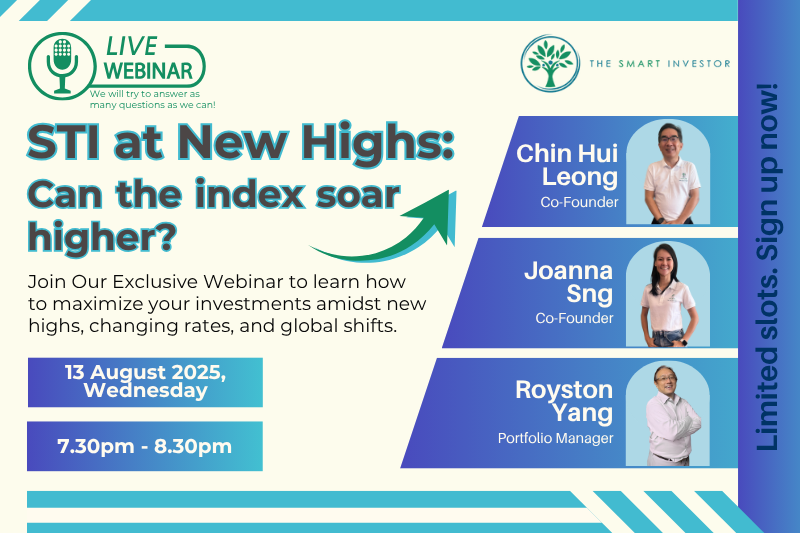Singapore Technologies Engineering (SGX: S63), or STE, is on a roll.
The blue-chip engineering group saw its share price touch an all-time high of S$6.93 and its shares are up an impressive 42% year-to-date.
Just last week, STE released its Investor Day 2025 slides which detailed the progress of its 2021 goals.
Management also released updated objectives for 2029 for the group and all three divisions.
Let’s dive into the five things you need to know about the engineering group’s latest Investor Day.
Ambitious five-year targets
STE last held its Investor Day four years ago in 2021 and set targets for 2026.
The group is on track to meet its 2026 targets as shown below.
Of the six targets set, three were achieved while another three are on track.
STE highlighted the growth of its order book as a leading indicator of its revenue growth.
The group’s order book stood at just S$14.4 billion in 2020 but this has almost doubled to S$28.5 billion by the end of 2024.
Management has set ambitious five-year targets for 2029 with plans to grow group revenue by more than 2.5 times the global GDP growth rate to hit S$17 billion.
The catalysts include geopolitical tensions (a tailwind for its defence business), the delivery of more aircraft and engines, and an increase in demand for digitalisation.
New growth drives include its digital business, smart mobility, and premier MRO (maintenance, repair and overhaul) engines.
Also, the group’s net profit compound annual growth rate (CAGR) is projected to exceed its revenue CAGR by up to five percentage points.
STE’s dividend per share should also rise in tandem with its profits – more on this later.
Commercial Aerospace: a favourable long-term outlook
STE’s Commercial Aerospace (CA) division has done an impressive job in growing its revenue by 17% CAGR from 2020 to 2024.
Revenue nearly doubled over this period from S$2.3 billion to S$4.4 billion.
Management has identified robust long-term tailwinds for the division to grow further.
20-year air traffic growth for passengers and cargo is expected to hit 3.6% and 4.1%, respectively (note: base year is 2024).
Passenger fleet growth will be in line with this air traffic increase, growing at a 20-year CAGR of 3.2%.
In turn, MRO growth CAGR from 2025 to 2034 is projected to hit 3.2% to end at US$153 billion.
CA will add new airframe capacity while optimising its network by strengthening its presence in major aviation markets.
The division’s assets under management (AUM) is targeted to hit US$3.5 billion by 2029, up from the current US$2.3 billion.
CA’s new target for 2029 is to grow its revenue to S$6 billion for a 7% CAGR.
Urban Solutions & Satcom (USS): Aim to grow smart city revenue to S$4.5 billion
STE’s USS division aimed to grow its smart city revenue to S$3.5 billion by 2026 and is on track to do so with 2024’s revenue at S$2.7 billion.
The aim is to scale up the smart city segment using various strategies.
Smart Mobility is targeted to exceed industry growth rates while STE will focus on building sustainable cities.
It will also accelerate the deployment of smart security and engage enterprises for its digital business.
Over in international markets, the aim is to achieve double-digit revenue CAGR.
Some examples of new product innovations include next-generation platform screen doors for rail operations and smart digital junctions at controlled junctions.
Management is even more ambitious for smart city, with the target to grow the sub-division’s revenue by 3.5 times the global GDP growth rate to hit S$4.5 billion by 2029.
Along the way, the goal is to double its digital business revenue to more than S$1.3 billion.
Defence & Public Security (DPS): A wide spectrum of opportunities
The DPS segment achieved a revenue CAGR of 10%, growing from S$3.4 billion in 2020 to S$4.9 billion by 2024.
The division’s major lines of business are shown below and are well-positioned to capture a wide range of business opportunities.
The division will strengthen its Singapore core by sharpening its domain focus and building in-country strategic capabilities.
Advanced technologies such as artificial intelligence and cybersecurity will also be concurrently developed.
Meanwhile, DPS will also strengthen strategic defence partnerships and grow them alongside key customers.
STE’s international defence business identified attractive opportunities as it reviewed the trends of rapid technological innovation, geopolitical tensions, and supply chain resilience.
DPS can help to accelerate the adoption of technology while it supports clients with localisation efforts.
The increase in defence spending because of tensions should act as a long-term tailwind for the division.
The sub-division has identified a total addressable market of more than US$11 billion over the next five years, spread across the US, Europe, Asia, and the Middle East.
DPS aims to grow its revenue to more than S$7.5 billion by 2029.
A progressive dividend growth plan
Income investors should rejoice as STE also announced a progressive dividend plan.
2024 saw STE’s total dividend increase to S$0.17, up from S$0.16 in the previous year.
For 2025, the engineering giant plans to increase its annual dividend to S$0.18, comprising three-quarters of the S$0.04 dividend each and a final dividend of S$0.06.
In addition, if STE manages to achieve steadily higher net profit, management plans to pay out about one-third of its year-on-year increase as incremental dividends.
This target is illustrated in the slide below.
Based on this premise, if STE’s profits manage to climb consistently from 2025 to 2029, investors could see steadily higher dividends because part of the profits will be paid out as incremental dividends.
First-time investors: We’ve finally released our Beginner’s Guide. Read it in an afternoon, follow the principles, pick an investing style and buy your first SGX stocks within the next few hours! Click here to download it for free.
Follow us on Facebook and Telegram for the latest investing news and analyses!
Disclosure: Royston Yang does not own shares in any of the companies mentioned.






